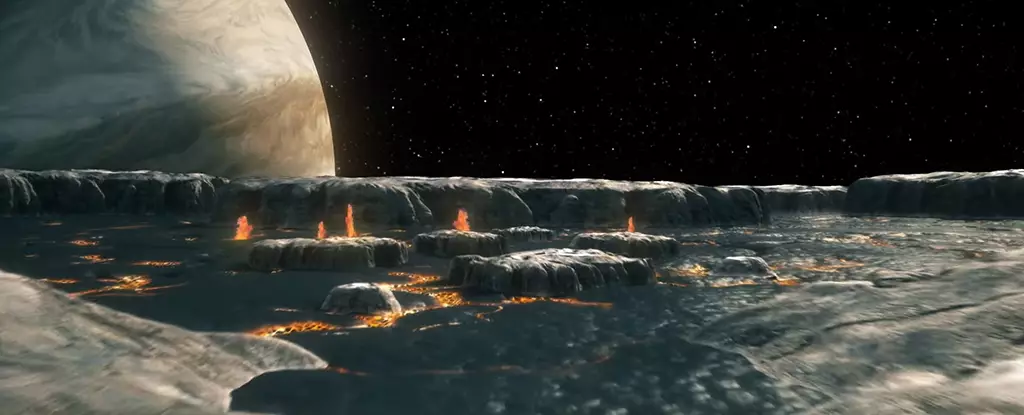Jupiter’s moon Io stands as a striking testament to the dynamic processes that govern celestial bodies within our Solar System. Renowned as the most volcanically active entity among them, Io boasts an astonishing 400 volcanoes and extensive lava flows that pepper its surface. Previous theories proposed the existence of a global magma ocean beneath its crust, providing a seemingly straightforward explanation for the moon’s geothermal phenomena. However, recent research conducted using data from NASA’s Juno spacecraft has compelled scientists to reassess these assumptions, paving the way for new insights into how such geological chaos manifests.
A collaborative effort by an international group of researchers has challenged the long-standing narrative of Io’s volcanic mechanisms. Contrary to the idea of a continuous, planet-wide magma reservoir, new findings indicate that Io’s eruptions are driven by localized magma chambers adhered to a predominantly solid mantle. This research amalgamates observations from Juno’s high-resolution imaging and extensive measurements of Io’s gravitational field, alongside historical data tracking the moon’s tidal deformations. The analysis ultimately paints a picture of a geologically tumultuous world where volcanic activity is not the product of a singular structure but rather numerous smaller systems that intermittently contribute to Io’s fiery surface.
Io’s relationship with Jupiter is dictated by gravitational forces that result in a pronounced elliptical orbit, a scenario that generates intense tidal flexing. This perpetual warping creates significant internal heat—sufficient to partially melt sections of Io’s interior. However, the findings from the recent study reveal that the extent of deformation observed does not align with the presence of a shallow global magma ocean. If such an ocean existed, the gravitational signatures would reflect a far more pronounced impact than currently observed. Thus, researchers conclude that Io operates under a regime where localized heating leads to its characteristically explosive eruptions.
The eruptions on Io manifest in a variety of astonishing ways, spewing plumes and creating intricate patterns across its surface. With features likened to a vibrant pizza, the terrain exhibits striking colors born from various volcanic materials, including silicates and sulfur dioxide. This continuous volcanic activity reshapes the moon’s geography and underscores its status as a dynamic environment. As noted by space physicist Scott Bolton, understanding the underlying mechanisms of Io’s volcanism is fundamental to comprehending similar processes that may occur on other celestial bodies, including moons and exoplanets.
The implications of this research extend beyond the singular case of Io, influencing the field of planetary science at large. The findings suggest that tidal flexing—a phenomenon observable in other celestial bodies—may yield critical insights into their internal structures and, consequently, their evolutionary paths. Scientists are keen to apply these revelations to other icy moons, such as Europa and Enceladus, which exhibit their own forms of geological activity. Furthermore, the study of tidal forces and their impacts on terrestrial bodies gives room for extrapolation into the characteristics of exoplanets and super-Earths, providing a broader framework for understanding planetary formation processes throughout the cosmos.
With the discovery of localized magma chambers driving the intense volcanic activity on Io, we stand at the precipice of a new interpretation of planetary geology. This research is not merely about the moon itself; rather, it represents a fundamental shift in how scientists approach the study of other planetary bodies within our Solar System and beyond. As we continue to unravel the complexities of celestial mechanics, realms once thought to be straightforward are revealing a much richer tapestry of geological activity—one that may reshape our understanding of the formation and evolution of celestial bodies entirely. This evolving narrative not only enhances our comprehension of Io but also weeks ahead for innovative explorations that will expand the horizons of planetary science.

